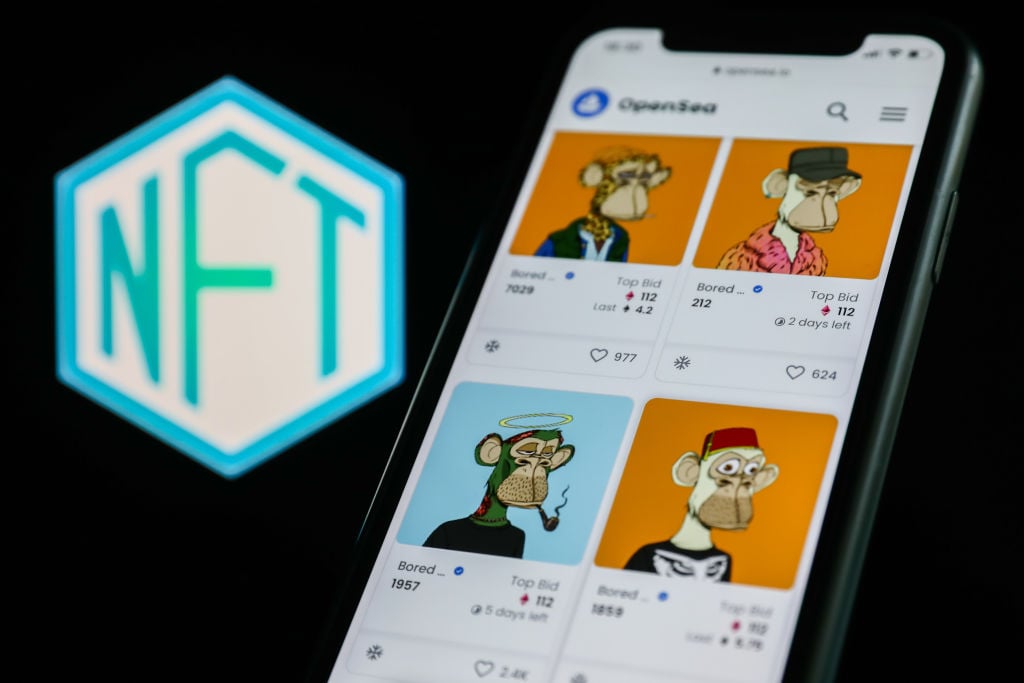The Boom and the Bust: How NFTs Went the Way of Beanie Babies
In early 2021, NFTs were presented as a way for artists to make life-changing money. All you needed was a symbol! So artists ran out to buy Ether so they could make NFTs from their work. Only the money didn’t flow in – unless your name is Beeple.
Now all that is left of the once over-hyped NFT market is dust in the wind. NFTs are becoming an unattractive piece of history. People don’t trade them and the only people talking about them are the ones trying to sell them.
Since the beginning of this year, the monthly transaction volume on OpenSea, the most popular NFT marketplace, has fallen by 90 percent. In August, the monthly transaction volume on OpenSea was $500 million, compared to $4.8 billion in January, according to the Dune Analytics dashboard.
The biggest indication that the hype was wearing off came in July when OpenSea announced layoff 20 percent of its employees. (They didn’t say how many people there were in total, but after the event, OpenSea only had 230 employees left.)
These layoffs coincided with a decline in the broader crypto markets. Bitcoin has lost 57 percent of its value since January, falling to $20,000. Ether, the second most popular crypto, has fallen 58 percent, to $1,500, over the same time frame. And several major crypto lending firms have filed for bankruptcy.

Bored Ape Yacht Club gathering in OpenSea shown on a phone screen. Photo by Jakub Porzycki/NurPhoto via Getty Images.
With inflation raging in the stock market, the last thing retail traders want to invest in right now is illiquid NFTs. By their very nature, NFTs are difficult to sell. While one bitcoin is as good as any, you need to find a special buyer for your NFT – and if that special buyer doesn’t come along, you could be stuck with your NFT for a long time.
Another noticeable sign that the NFT markets have cooled is that the floor price for popular NFT projects is falling. The minimum anyone is willing to bid on a Bored Ape Yacht Club NFT is currently 78 ETH ($117,000), according to CoinGecko. At its peak this year, on April 30, the floor price for one BAYC NFT was 153 ETH ($530,000).
A sign of bad taste
In a space characterized by widespread fraud and hacks, “NFT” is becoming a dirty word in many circles. Because NFTs are so easy to create, opportunists jump in at any new opportunity to make money.
The death of Queen Elizabeth II led to a flood of Queen Elizabeth themed NFT collections and special edition NFTs in various existing projects enter the market.
When the David Bowie estate announced plans to launch NFTs with OpenSea, fans was angry. “How about we just leave out the NFT goof and just raise money for charity without using a pyramid scheme,” wrote one critic.
Big brands entering the space are now feeling a particularly harsh blowback. Starbucks is a latecomer to the NFT party much mocked to issue an extension to the rewards program that will allow customers to collect NFTs.
Starbucks must have known the reaction to the NFT launch would be bad, as it immediately disabled responses to its Twitter announcement.
Celebrities who once shilled so-called “blue-chip” NFTs may be less inclined to do so. Last month, Truth in Advertising sent letters to 17 celebritiesincluding Jimmy Fallon and Gwyneth Paltrow, reminding them that not disclosing material connections when posting about something on social media violates FTC guidelines.

Madonna and Beeple, The mother of technologystill image from NFT video art work, 2022, courtesy of the artists
While NFTs continue to be unpleasant, the bad news is that they will be slow to die out completely. After bringing huge amounts of money into the space, venture capitalists want to see a return on their investment—even if that means throwing good money after bad.
In May, venture capital firm Andreessen Horowitz announced it had raised a $4.5 billion crypto fund, the industry’s largest to date. That money has to go somewhere.
The only thing that could make a difference in how the world views NFTs is that Ethereum, the blockchain on which most NFTs live, is moving to a more energy-efficient proof of stake, so that the network will no longer consume the energy of a small country. The CO2 projection of Ethereum was one of the biggest public objections to NFTs.
We are also seeing a movement away from art NFTs into games as NFT promoters desperately try to make them useful. Since August 1, Web3 games and metaverse projects have raised more than $750 million, according to a DappRadar report.
After raising $450 million in an Andreessen Horowitz-led round in March, Yuga Labs, the company behind Bored Apes Yacht Club, has turned to creating a massively multiplayer game, which it’s now tasked with getting off the ground.
Even when common sense dictates that NFTs have gone the way of Beanie Babies, venture capitalists and their overfunded projects will still be well past the point where we’ve all stopped taking notes.
Follow Artnet News on Facebook:
Do you want to be at the forefront of the art world? Subscribe to our newsletter to get the latest news, eye-opening interviews and sharp critiques that drive the conversation forward.


